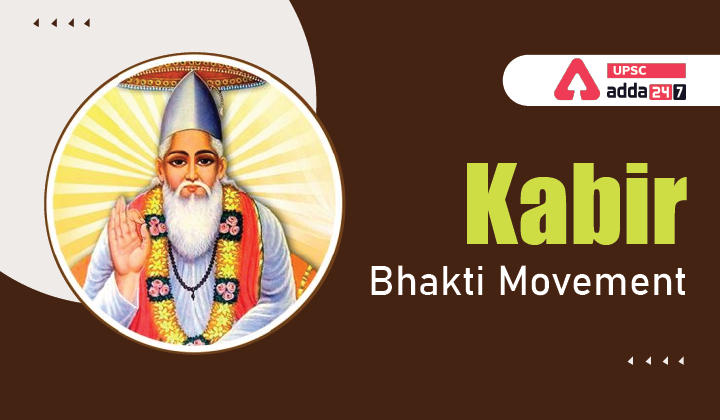Table of Contents
Sant Kabir- Relevance for UPSC Exam
Sant Kabir: Kabir was an extra-ordinary poet of the Bhakti Movement. Kabir is revered and respected across the religion for his teachings and beliefs. Sant Kabir and Bhakti movement is an Important Part of the UPSC Mains GS Paper 1 Syllabus (Indian History- Indian culture will cover the salient aspects of Art Forms, Literature and Architecture from ancient to modern times.)
Sant Kabir in News
- Recently, the President Ram Nath Kovind inaugurated the Sant Kabir Academy and Research Centre Swadesh Darshan Yojana and paid tribute to the Bhakti saint, Kabir at Maghar (Uttar Pradesh).
- According to legends, Kabir is said to have departed from the mortal world in Maghar, Uttar Pradesh.
12th BRICS Agriculture Ministers Meeting 2022
Sant Kabir
- Birth and Death: Kabir was born in Varanasi and lived between the years 1398 and 1448, or till the year 1518 according to popular belief.
- Family profession: Kabir was from a community of ‘lower caste’ weavers of the Julaha caste. He also learned the art of weaving.
- Kabir’s Guru: Kabir also believed to be (but not on strong historical grounds) a disciple of the famous guru Ramananda, a 14th century Vaishnava poet-saint.
- Part of Bhakti Movement: One school within the Bhakti movement was the Nirguni tradition and Sant Kabir was a prominent member of it. In this tradition, God was understood to be a universal and formless being.
- Literary Contribution: Kabir wrote many poems like Bijak, Sakhi Granth, Kabir Granthawali and Anurag Sagar.
- His verses are found in Sikhism’s scripture Guru Granth Sahib.
- The major part of his work was collected by the fifth Sikh guru, Guru Arjan Dev.
Kabir- Key Belief
- On Religion: Kabir is in modern times portrayed as a figure that synthesized Islam and Hinduism.
- He was against any religious discrimination and readily accepted all the religions.
- Universal God: He believed in the oneness of God. In the Dabistan of Mohsin Fani and Ain-i-Akbari of Abul Fazl, he is mentioned as a ‘Muwahid’ (Believer in one God).
- Against Idol Worship: Kabir opposed the idea of worshipping the idols and showed clear confidence in Bhakti and Sufi ideas.
- Against Caste System: Kabir was against the caste system practiced in the Hindu community.
- Kabir also criticised the rites, rituals and customs which he thought were futile.
Bhakti Movement
- About: The Bhakti movement, which began in the 7th century in South India, had begun to spread across north India in the 14th and the 15th centuries.
- Key Features: The bhakti movement was characterized by popular poet-saints who sang devotional songs to God in vernacular languages, with many preaching for the abolishing the Varna system and some kind of Hindu-Muslim unity.
- They emphasized an intense emotional attachment with God.
- Significance: Many of the saints of the Bhakti movement came from the ranks of the lower to middle artisanal classes.
- Kabir was a ‘low caste’ weaver (Julaha), Raidas was a leather worker and Dadu a cotton carder.
- Their radical dissent against orthodoxy and rejection of caste made these poet-saints extremely popular among the masses and their ideology of egalitarianism spread across India.
Sri Ramanujacharya | Statue of Equality to be Unveiled by the Prime Minister
Sri Ramanujacharya | Statue of Equality to be Unveiled by the Prime Minister




 TSPSC Group 1 Question Paper 2024, Downl...
TSPSC Group 1 Question Paper 2024, Downl...
 TSPSC Group 1 Answer key 2024 Out, Downl...
TSPSC Group 1 Answer key 2024 Out, Downl...
 UPSC Prelims 2024 Question Paper, Downlo...
UPSC Prelims 2024 Question Paper, Downlo...




